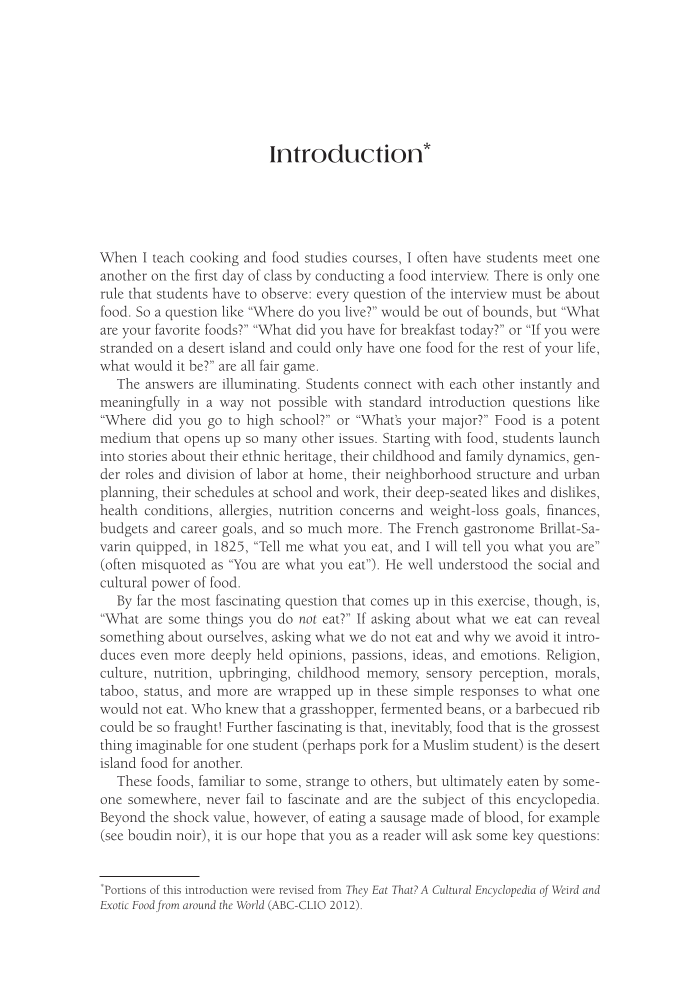Introduction* When I teach cooking and food studies courses, I often have students meet one another on the first day of class by conducting a food interview. There is only one rule that students have to observe: every question of the interview must be about food. So a question like “Where do you live?” would be out of bounds, but “What are your favorite foods?” “What did you have for breakfast today?” or “If you were stranded on a desert island and could only have one food for the rest of your life, what would it be?” are all fair game. The answers are illuminating. Students connect with each other instantly and meaningfully in a way not possible with standard introduction questions like “Where did you go to high school?” or “What’s your major?” Food is a potent medium that opens up so many other issues. Starting with food, students launch into stories about their ethnic heritage, their childhood and family dynamics, gen- der roles and division of labor at home, their neighborhood structure and urban planning, their schedules at school and work, their deep-seated likes and dislikes, health conditions, allergies, nutrition concerns and weight-loss goals, finances, budgets and career goals, and so much more. The French gastronome Brillat-Sa- varin quipped, in 1825, “Tell me what you eat, and I will tell you what you are” (often misquoted as “You are what you eat”). He well understood the social and cultural power of food. By far the most fascinating question that comes up in this exercise, though, is, “What are some things you do not eat?” If asking about what we eat can reveal something about ourselves, asking what we do not eat and why we avoid it intro- duces even more deeply held opinions, passions, ideas, and emotions. Religion, culture, nutrition, upbringing, childhood memory, sensory perception, morals, taboo, status, and more are wrapped up in these simple responses to what one would not eat. Who knew that a grasshopper, fermented beans, or a barbecued rib could be so fraught! Further fascinating is that, inevitably, food that is the grossest thing imaginable for one student (perhaps pork for a Muslim student) is the desert island food for another. These foods, familiar to some, strange to others, but ultimately eaten by some- one somewhere, never fail to fascinate and are the subject of this encyclopedia. Beyond the shock value, however, of eating a sausage made of blood, for example (see boudin noir), it is our hope that you as a reader will ask some key questions: *Portions of this introduction were revised from They Eat That? A Cultural Encyclopedia of Weird and Exotic Food from around the World (ABC-CLIO 2012).
Document Details My Account Print multiple pages
Print
You have printed 0 times in the last 24 hours.
Your print count will reset on at .
You may print 0 more time(s) before then.
You may print a maximum of 0 pages at a time.




































































































































































































































































































































































